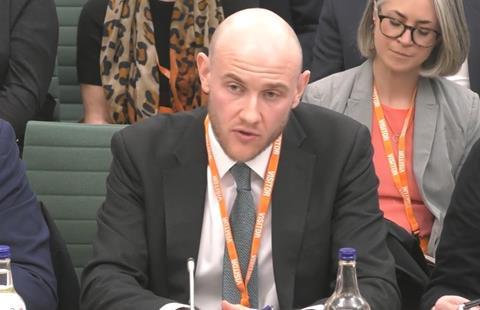Witnesses tell MPs of barriers to remediating blocks, including limited building access, workforce shortages and unqual access to funding for social housing providers
Difficulty accessing buildings is delaying cladding remediation works, the executive director of the Home Builders Federation (HBF) warned in parliament earlier this week.

David O’Leary, speaking in front of the Public Accounts Committee (PAC) this week, outlined several practical issues causing serious hold ups in remediating dangerous cladding in high-rise buildings (HRBs). These include freeholders and management companies not allowing workers access to buildings awaiting remediation works.
He said that fixing cladding issues is a “big task that relies on factors beyond the homebuilding industry and contractors.”
“Freeholders are key to this: if you can’t access buildings, then you can’t make assessments and you can’t begin the works.”
He added: “That is now improving, thanks to the new government’s reassertion of the need for other players to play their part.” The government in December 2024 published its remediation action plan, with the aim of ensuring buildings in government-funded schemes over 18 metres in height with unsafe cladding are remediated by the end of 2029. It proposed a new criminal offence for those who fail to remove cladding and made it clear that landlords can include management companies.
At the evidence session, which is part of the PAC’s ongoing inquiry into the remediation of dangerous cladding, O’Leary also said freeholders and management companies are “not always easy to deal with, even if you’re a resident yourself.”
He also highlighted a skills shortage as a barrier to cladding remediation, compounded by an ageing workforce, Brexit and a lack of qualified individuals.
He said: “The government has a panel of assessors, but only a third of those are chartered fire engineers…
“Some developers will only want to use the most qualified engineers because government standards have changed relatively frequently and assessments have been brought into doubt.”
Adam Hug, chair of local infrastructure and net zero board at the Local Government Association and the leader of Westminster Council, agreed on this point. He said construction bodies are “all competing for the same people” and that it takes several years to train fire engineers and surveyors, who are “learning on the job.”
At the same session, Rhys Moore, executive director of public impact at the National Housing Federation, re-iterated the trade body’s calls for housing associations to gain easier access to grant from the £3.5bn Building Safety Fund.
Under the fund’s current rules, social landlords are only eligible for building safety funds in specific circumstances, including if costs would otherwise be passed on to leaseholders as all other options are exhausted, or they threaten the landlord’s financial viability.
Moore said: ”In the case of social housing, funding really matters and the design of the funding currently explicitly excludes social tenants from being able to access public support.
>>See also: Rayner’s plan to speed up remediation won’t work without more funding, warn G15 and NHF
>>See also: What the delays at the Building Safety Regulator mean for high-rise development“
”About 90% of public funding has gone to private building owners to support remediation [and] about 10% has gone to social landlords. “We think that set-up is unfair, deeply inefficient and wrong in that it prioritises tenure over risk.
“Equal access to funding would be a real factor in unlocking pace [because] the current funding model requires social landlords to first try and secure a resolution from contractors.”
Angela Rayner, housing secretary, in December said the pace of remediation “has been far too slow for far too long” and the government is ” taking decisive action to right this wrong and make homes safe.”










No comments yet